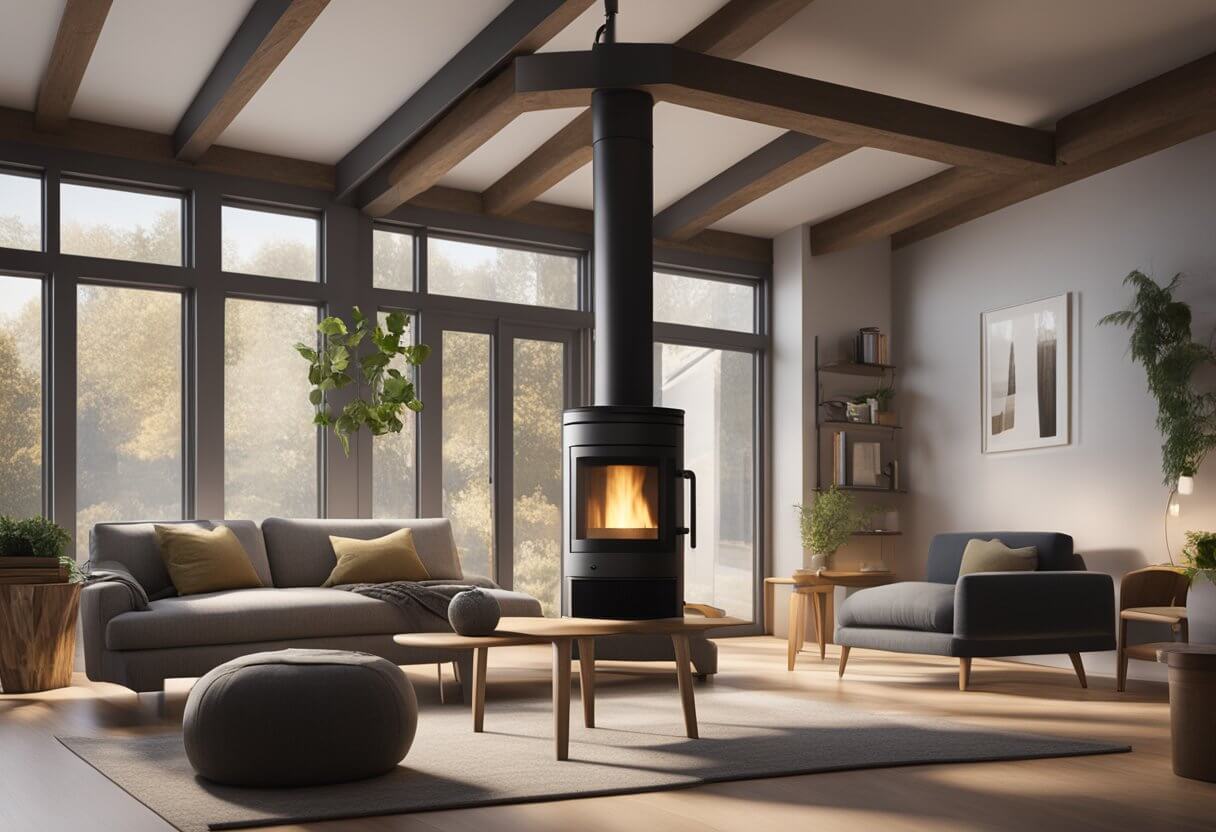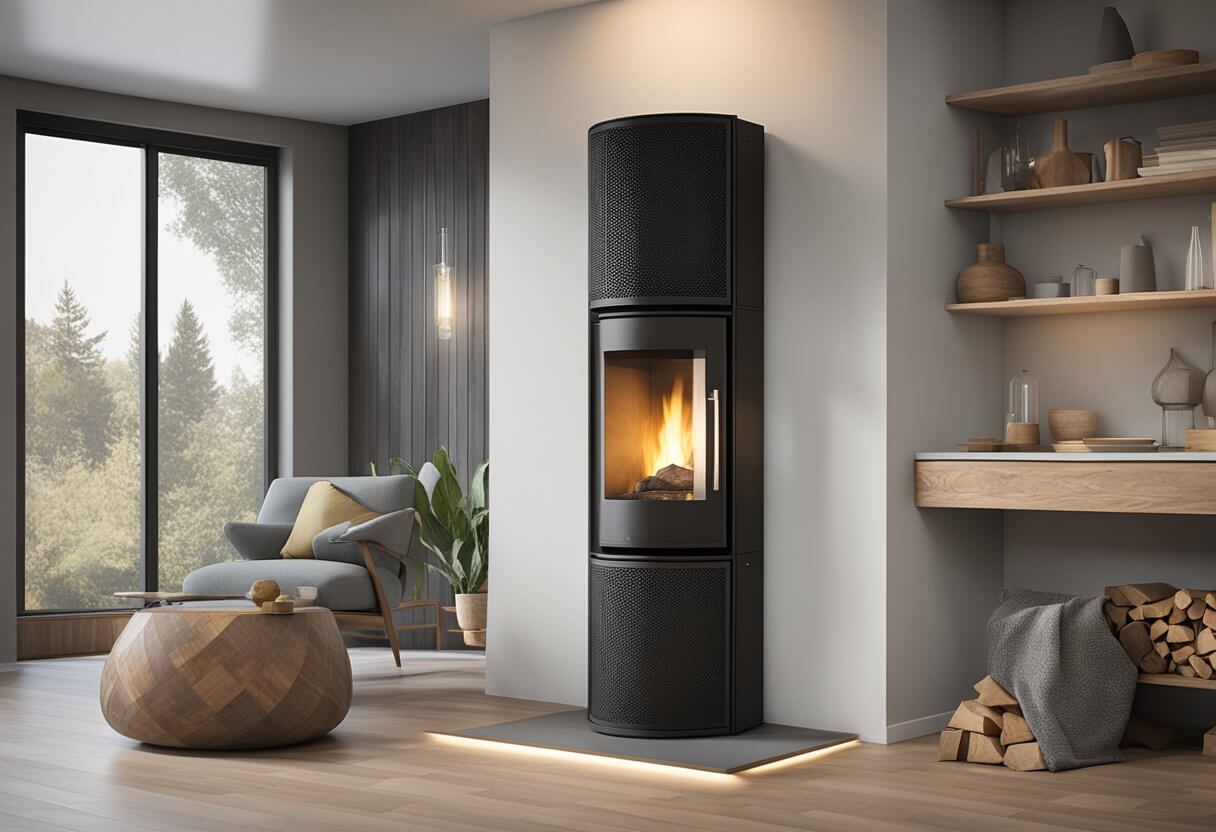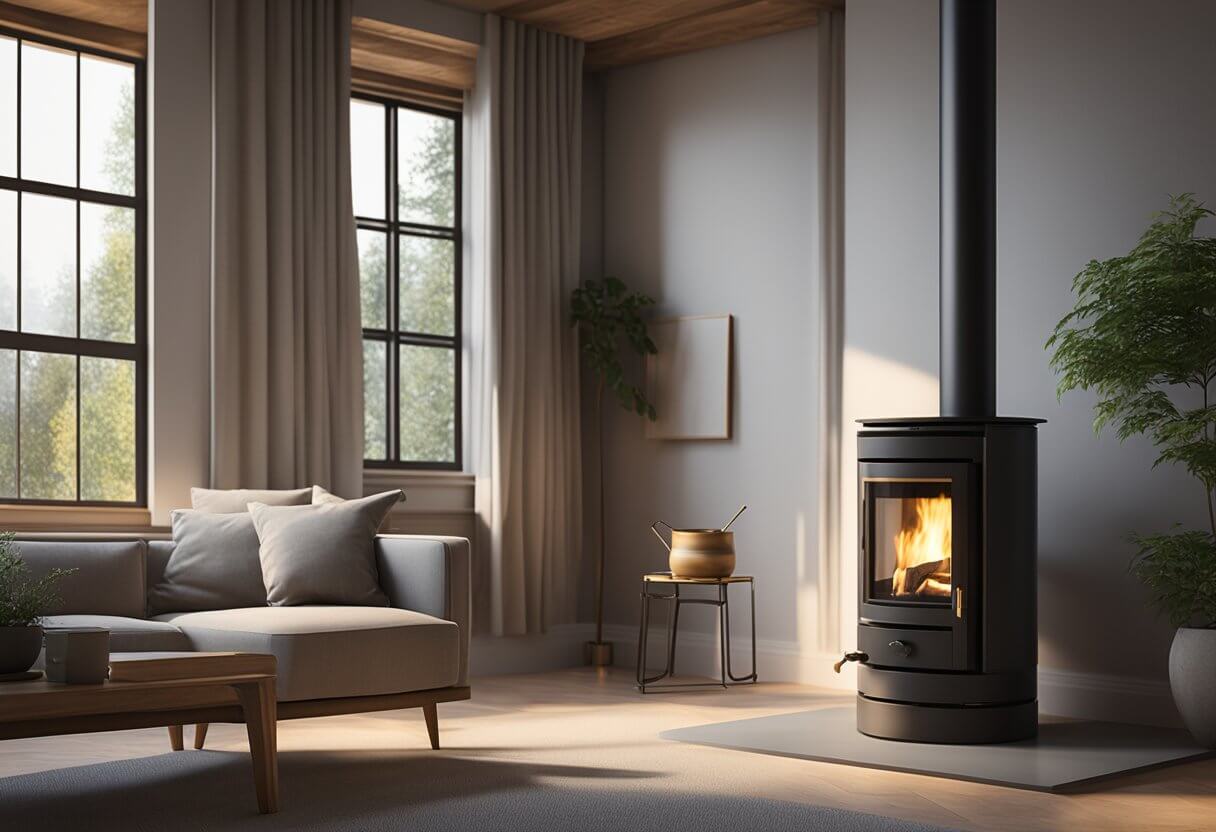Introduction
Pellet stoves offer an efficient way to heat homes, but many homeowners wonder about the necessity of a chimney for proper ventilation. Unlike traditional wood stoves that typically require a chimney to expel smoke, pellet stoves are designed for flexibility with different venting options. Pellet stoves use compressed wood or biomass pellets as fuel, which burn cleaner, and therefore, the venting requirements are unique. They can be vented through a wall or an existing chimney, and some models allow for air intake directly from the room or from outside, reducing the need for traditional chimney structures.
When installing a pellet stove, understanding the installation process and building regulations is crucial for both safety and performance. The vent installation must comply with local codes and manufacturer’s guidelines to ensure the stove operates efficiently and safely. Attention must also be paid to the maintenance of the venting system to prevent blockages and ensure the removal of combustion gases, as well as considering the impact on indoor and outdoor air quality. Proper ventilation is key to the safe and effective use of pellet stoves, and careful planning and adherence to requirements will provide the best results.
Key Takeaways
- Pellet stoves can use alternative venting methods instead of traditional chimneys.
- Adhering to installation guidelines and building codes is critical for safe pellet stove operation.
- Regular maintenance of the venting system is essential for efficiency and safety.
Pellet Stove Venting Essentials
Proper venting is crucial for pellet stoves, as it ensures safe operation and optimal performance. The system should be designed to manage exhaust efficiently and bring in fresh air for combustion.
Venting Types and Their Functions
Pellet stoves can be vented through different methods, each serving specific functions. The most common types are direct venting and venting through an existing chimney.
Direct Venting involves installing a vent pipe directly from the stove to the outside. It doesn’t require a traditional chimney. This method uses a flue system to draw air in for combustion and expel exhaust gases. It’s critical for the flue to be hermetically sealed to prevent gas leaks. Direct venting can be through an external wall or, in some cases, through the roof.
Chimney Venting may utilize a traditional chimney with a chimney liner to support the stove’s flue system. The liner ensures that the path the exhaust follows is properly sized and sealed, which enhances safety. This setup is often used when integrating a pellet stove into a space that already has a chimney. The chimney must be in good condition to be used safely.
Understanding the Flue System
The flue is an essential part of the pellet stove that carries the exhaust outside the home and allows air to flow in. A correctly installed flue system maintains the balance between the vent pipe and air intake vent.
For safety, the flue must avoid any combustible materials in its path. The installation of the flue system should follow the venting requirements specified by the local building codes and the manufacturer’s guidelines. The components, such as the flue socket, should be tightly connected and checked regularly for integrity. Special attention must be paid to clearance distances from flammable materials and sealing of joints to ensure that exhaust gases are properly expelled.
Safety and Environmental Impact
When it comes to pellet stoves, safety and environmental impact are paramount. Pellet stoves offer a heating solution that is sensitive to the environment and when installed correctly, safe for home use.
Pellet stoves work efficiently, helping to reduce emissions compared to older, traditional wood stoves. They burn compressed wood or biomass pellets, which are much cleaner because they contain low moisture and are refined. Furthermore, they result in lower particulate emissions, making them a greener option.
Safety wise, pellet stoves must comply with ventilation requirements to ensure the proper removal of fumes. These fumes, if not vented correctly, can pose health risks and even risks of fire. Strict adherence to the manufacturer’s guidelines for installation, especially concerning clearance from combustible materials, is essential to prevent any hazards.
Proper ventilation helps to dispel any gases produced by the burning pellets, like carbon monoxide, that are dangerous if allowed to build up indoors. Pellet stoves typically do not require a traditional chimney, but rather a flue that vents directly to the outside, either through an existing chimney (with a flue liner) or through a wall. This design minimizes the risk of dangerous fume accumulation and reduces the impact on indoor air quality.
When considering the environmental impact, it is essential to highlight that pellet stoves use biomass, a renewable energy source. The fuel is often made from waste wood, which helps in recycling and managing wood waste. Efficient combustion also means that pellet stoves use this fuel effectively, ensuring that less waste ends up in the environment.



